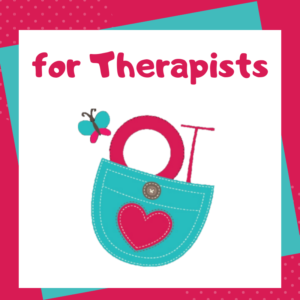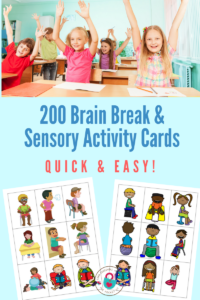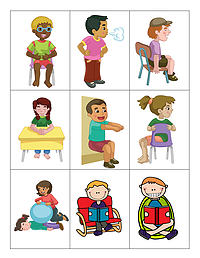
20 Snowman Crafts
Who wants to build a snowman? We do! This week we’ve rounded up some snowman crafts and activities. Each link contains a fun…
What is mindfulness? According to the American Mindfulness Research Association, it’s:
“The state, process, and practice of remembering to observe moment-to-moment experience with openness, and without automatic patterns of previously conditioned thoughts, emotions, or behaviors. Mindfulness can be cultivated through mind-body practices (such as focused attention and open monitoring meditation as well as other intrapsychic and sensory-based practices) that are founded on a discerning mode of awareness that recognizes wholesome and unwholsome states of being.”
Mindfulness requires us to be aware and awake. Our mind tends to wonder about as we go through the paces of everyday life. We move through our routine with relative ease. Sometimes we even wonder, ‘where did I put that’ or ‘did I even brush my teeth this morning?’ Why? It’s because our brains switch to ‘default’ modes of routine in order to conserve energy. Read this article which states that 47% of the time, we are thinking about something OTHER THAN what we are currently doing! Amazing.
Children are no different as they work through the tasks of the day. Additional pressure is put on kids today with the rise of standardized tests, increased demands of school, technology, and greater expectations. Consider those children who have special needs and the stress that comes along with experiencing difficulty and frustration over even the simplest of tasks.
 The question remains, ‘how do we become more mindful and then how can we teach our children about mindfulness?’ Never fear, The Pocket Occupational Therapist is here with my ‘Out of the Pocket
The question remains, ‘how do we become more mindful and then how can we teach our children about mindfulness?’ Never fear, The Pocket Occupational Therapist is here with my ‘Out of the Pocket
Activities’ for you.
1) Consciously connecting with your senses isn’t difficult, but requires some practice. For example, when your client is completing a mundane task, such as hand washing, encourage her to use her senses to feel the water as it touches her skin. Talk about the water’s temperature, the slimy feeling of the soap, the rough texture of the towel as it touches her sensory skin receptors.
Another idea: feel the keys as you type. Consider all of the textures, sounds, etc.
Stopping to think about even the simplest of tasks re-focuses the brain and opens communication between neural pathways.
2) Use a bell or tone in your session. I recently presented in Ohio at the OCALICON annual conference and used one of my favorite apps, the mindfulness bell. (I receive no fee if you chose to purchase). When the tone sounds, focus on it and raise your hand or complete a gesture when the tone stops. It’s a neat way to take a quick ‘time-out’ of the task at hand to focus and re-direct attention.
3) One of my favorite tasks (for many reasons) is to complete a task in slow motion. Slow, deliberate motions force us to stop and think about what it is that we are doing. Additionally, when our muscles complete slow movements and isometrics, they actually become stronger.
When walking around the clinic during an obstacle course…….say, ‘S…L…O…W D…O…W…N’ and both therapist and client move at a reduced pace and more deliberately. Fun!
Don’t forget to recommend The Parent’s Guide to Occupational Therapy for Autism & Special Needs. It’s like having your favorite handouts all in one book. It provides explanations about SPD, toileting, motor skills and many more. Then, activities are given to help strengthen skills in those areas. Great for new therapists, teachers, and parents! Published by Jessica Kingsley, it won the Family Choice Award and I couldn’t be more excited! Here’s the link to check it out.
 NEW! My book on INTEROCEPTION. This ‘eighth’ sense involves feelings and emotional awareness plus internal urges and responses such as hunger, toilet needs, thirst, fatigue, etc. Get it on Amazon here or by clicking on the book photo.
NEW! My book on INTEROCEPTION. This ‘eighth’ sense involves feelings and emotional awareness plus internal urges and responses such as hunger, toilet needs, thirst, fatigue, etc. Get it on Amazon here or by clicking on the book photo.
4) Teach THANKFULNESS. That’s a tough one, especially to those children who have autism and thus, difficulty ‘putting themselves into someone else’s shoes.’ During the session, ask what the child is thankful for. This could be whittled down to more specifics such as, “Who brought you here today?” “Who helped you make your breakfast?” and so on. When we stop to consider those who have helped us along the way, we open new brain pathways. Try it yourself. Who helped you in the last week? I’m quite certain another person contributed something to your life.
5) ‘Feel’ your body. Ask the child to lay on the mat (you try it too). Without moving, ask the child to tighten up the muscles of his face in a sour/pursing way. Then relax. Move through the body and tighten then loosen the muscles group by group. Doing this shows children are in control of their bodies and encourages them to understand that they have a ‘say so’ over what actions they complete. Do a body scan to pause and feel heartbeat, breathing, other noises or sensations in the body you notice while being quiet.


Check out our new Brain Break, Movement, Therapy resource cards. 200 cards for your clinic, classroom, and home! Includes: Breathing exercises, sitting, standing, and lying activities, therapy ball, bean bag, mindfulness, instructions for calm-down jars and so much more! Instructions for EACH card are included. Print and glue onto a popsicle stick. Each child can choose an activity!
Mindfulness does not come easy. In fact, practicing mindfulness is necessary in order to form and strengthen new neural pathways.
Are you using mindfulness in your OT practice? Let me know what your favorite activity is. Looking for more resources? Check out my earlier blog post on interoception activities.



